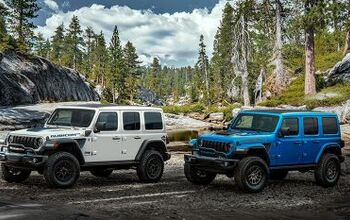SEC Investigating Tesla for Failing to Notify Investors of Fatal Crash

Was the fatal May crash of a Tesla Model S driving in Autopilot mode significant enough for the automaker to inform its shareholders? The Securities and Exchange Commission plans to find out.
The federal agency recently opened an investigation into Tesla to determine if the automaker broke securities laws by not notifying investors of the crash, according to the Wall Street Journal.
To reach a conclusion, the SEC needs to decide whether the May 7 crash that killed Joshua Brown on a Florida highway was a “material” event — an incident serious enough to warrant a securities filing, which would make investors aware of potential risk.
Brown died after his vehicle’s semi-autonomous Autopilot system failed to recognize a tractor-trailer crossing the highway in front of him. The radar-and-camera setup controlling the system mistook the brightly lit trailer for the surrounding sky, meaning it didn’t alert the driver or begin emergency braking.
Tesla informed the National Highway Traffic Safety Administration of the crash on May 16, but the first time investors heard of it was a June 30 blog post on the automaker’s website. (That post coincided with media reports detailing the NHTSA’s investigation into the crash.)
By late May, Tesla investigators determined that the victim’s Autopilot system contributed to the crash, but not before the company sold $2 billion of stock.
A source familiar with the matter told the WSJ that the SEC investigation is preliminary, and might not result in any action on the part of the agency.
Even before the SEC announced its probe, some critics argued the crash counted as “material.” Tesla and the publication Fortune waged an online battle over the debate, with the magazine stating the automaker should have revealed details of the crash earlier.
[Image: Tesla Motors]
Correction: An earlier version of this story stated the Tesla Autopilot system used laser and camera technology to see objects in its vicinity. Tesla vehicles do not use laser, but use radar. We’ve corrected the article to reflect this.

More by Steph Willems
Latest Car Reviews
Read moreLatest Product Reviews
Read moreRecent Comments
- El scotto Mobile homes are built using a great deal of industrial grade glues. As a former trailer-lord I know they can out gas for years. Mobile homes and leased Kias/Sentras may be responsible for some of the responses in here.
- El scotto Bah to all the worrywarts. A perfect used car for a young lady living near the ocean. "Atlantic Avenue" and "twisty's" are rarely used in the same sentence. Better than the Jeep she really wants.
- 3-On-The-Tree I’ll take a naturally aspirated car because turbos are potential maintenance headaches. Expensive to fix and extra wear, heat, pressure on the engine. Currently have a 2010 Corolla and it is easy to work on, just changed the alternator an it didn’t require any special tools an lots of room.
- El scotto Corolla for its third-world reliability.
- Aaron Recently cross shopped both cars. Decided to go with the civic sport. Like the non direct injection 2.0 engine (no long term carbon buildup) and preferred the Hondas transmission over the Toyotas. The civic interior seems much nicer and roomier. Also Honda had many more civics available to choose from vs Toyota. Got almost 2k off sticker. Felt it was the better deal overall. Toyota was not budging on price.


































Comments
Join the conversation
The Tesla system is radar and camera based, they do not have a laser sensor of any kind. The grownup automakers and Google are all developing real autonomous systems using LiDAR (a spinning laser), which would have easily 3D mapped a freaking tractor trailer.
@NickS: I can imagine a failure mode with forward looking radar if the radar field of view is limited to hood height and below.